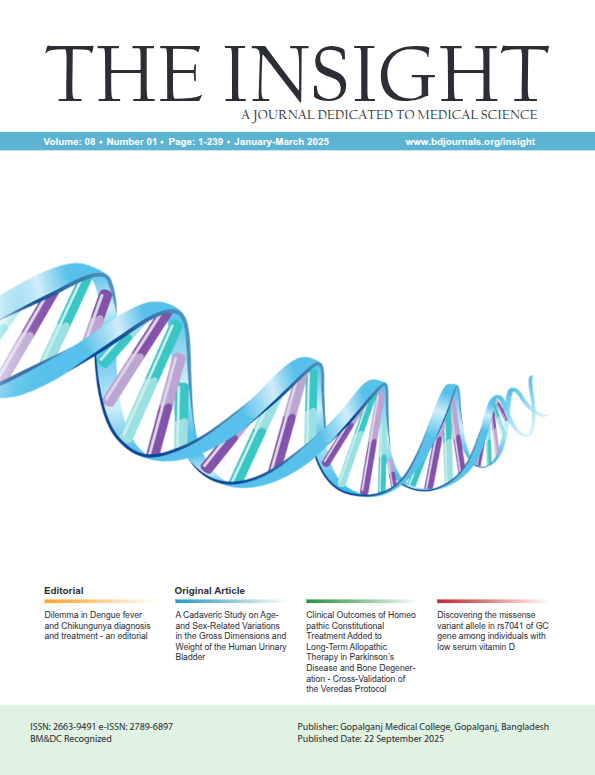Abstract
Background: Troponin-I is a highly sensitive biomarker for myocardial injury and may predict in-hospital outcomes in ST-elevation myocardial infarction (STEMI) patients. This study aimed to estimate serum troponin-I levels in STEMI patients and evaluate their prognostic significance for in-hospital outcomes. Methods & materials: This cross-sectional observational study included 100 STEMI patients admitted to Sir Salimullah Medical College & Mitford Hospital, Dhaka, Bangladesh. Serum troponin-I levels were measured at admission and patients were categorized into three groups: <0.034 ng/mL, 0.034–0.12 ng/mL, and ≥0.12 ng/mL. In-hospital outcomes including arrhythmia, cardiogenic shock, heart failure, hospital stay duration, and mortality were recorded. Results: The mean age was 52.5 ± 13.1 years, with males comprising 59% of patients. Hypertension (63%), smoking (47%), and diabetes mellitus (42%) were the most common risk factors. Arrhythmia rates increased from 0% (<0.034 ng/mL) to 46.1% (≥0.12 ng/mL); cardiogenic shock rose from 3.7% to 23.0%; and heart failure rose from 0% to 30.7%. Hospital stays >7 days were observed in 76.9% of patients with troponin-I ≥0.12 ng/mL. Mortality was highest (38.5%) in this group, compared to 0% in the lowest troponin category. Conclusion: Elevated admission troponin-I levels are associated with increased in-hospital complications, prolonged hospitalization, and mortality among STEMI patients. Troponin-I measurement serves as a valuable tool for early risk stratification in acute STEMI management.

This work is licensed under a Creative Commons Attribution 4.0 International License.
Copyright (c) 2025 The Insight





 PDF
PDF